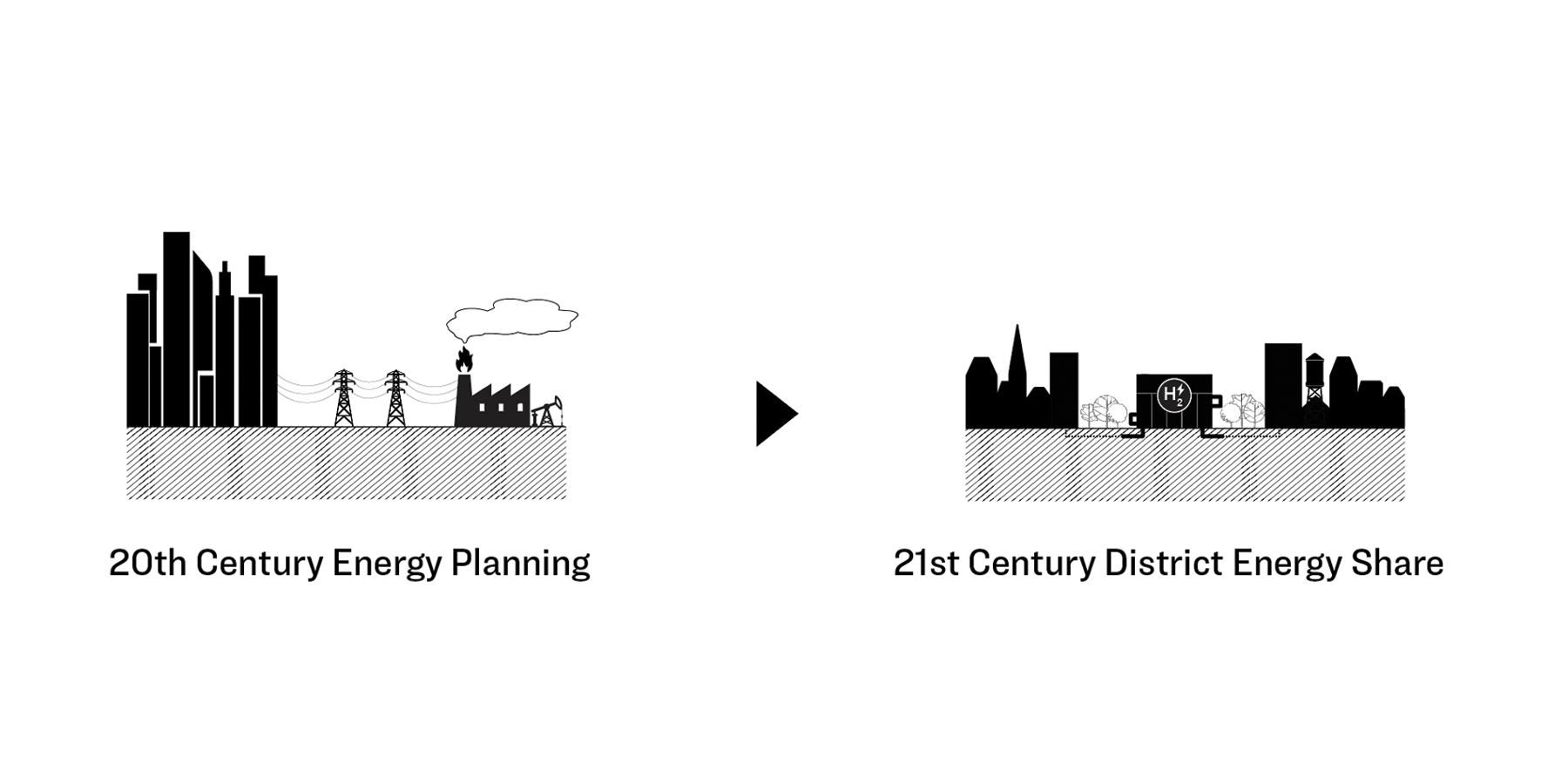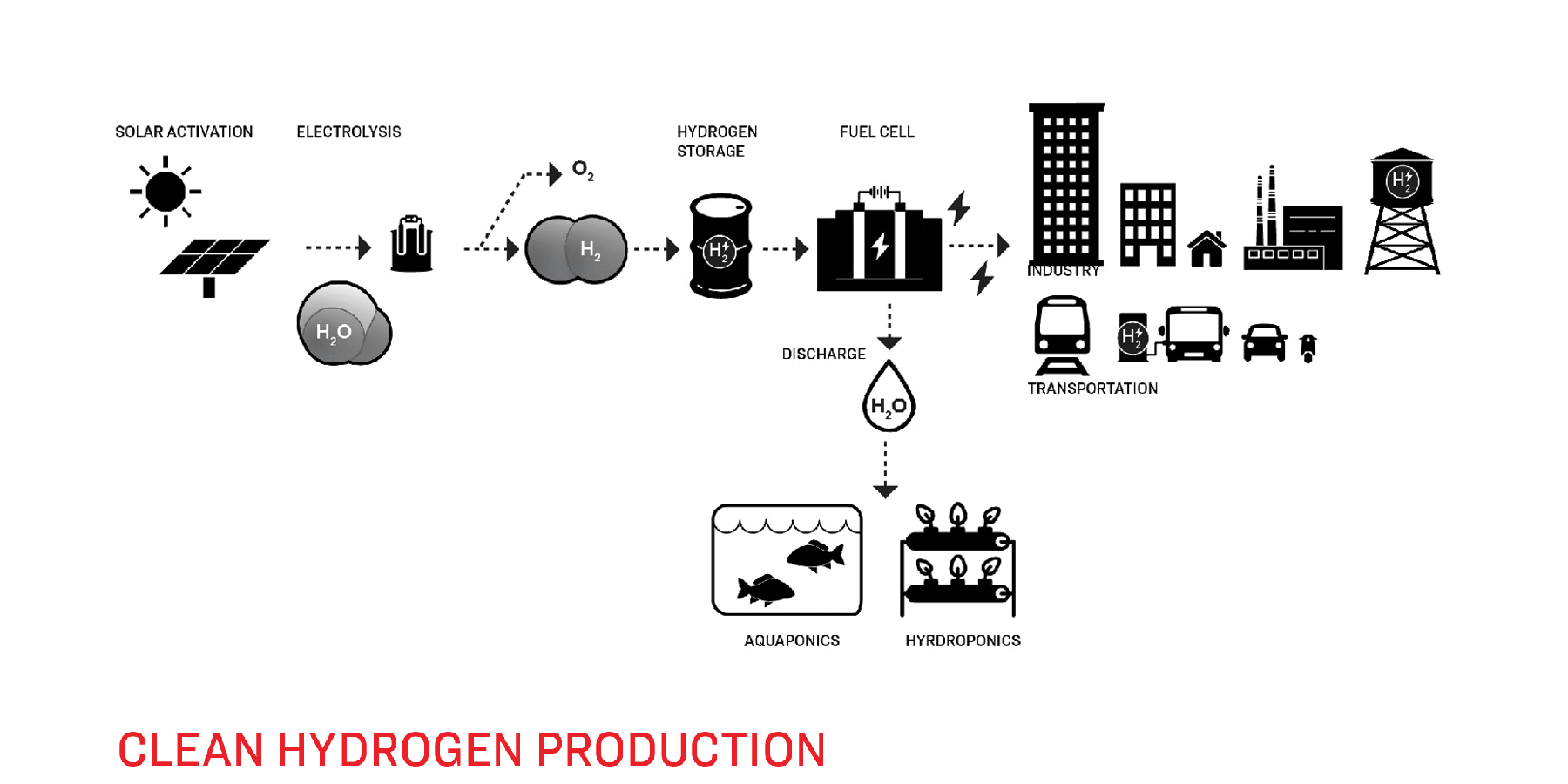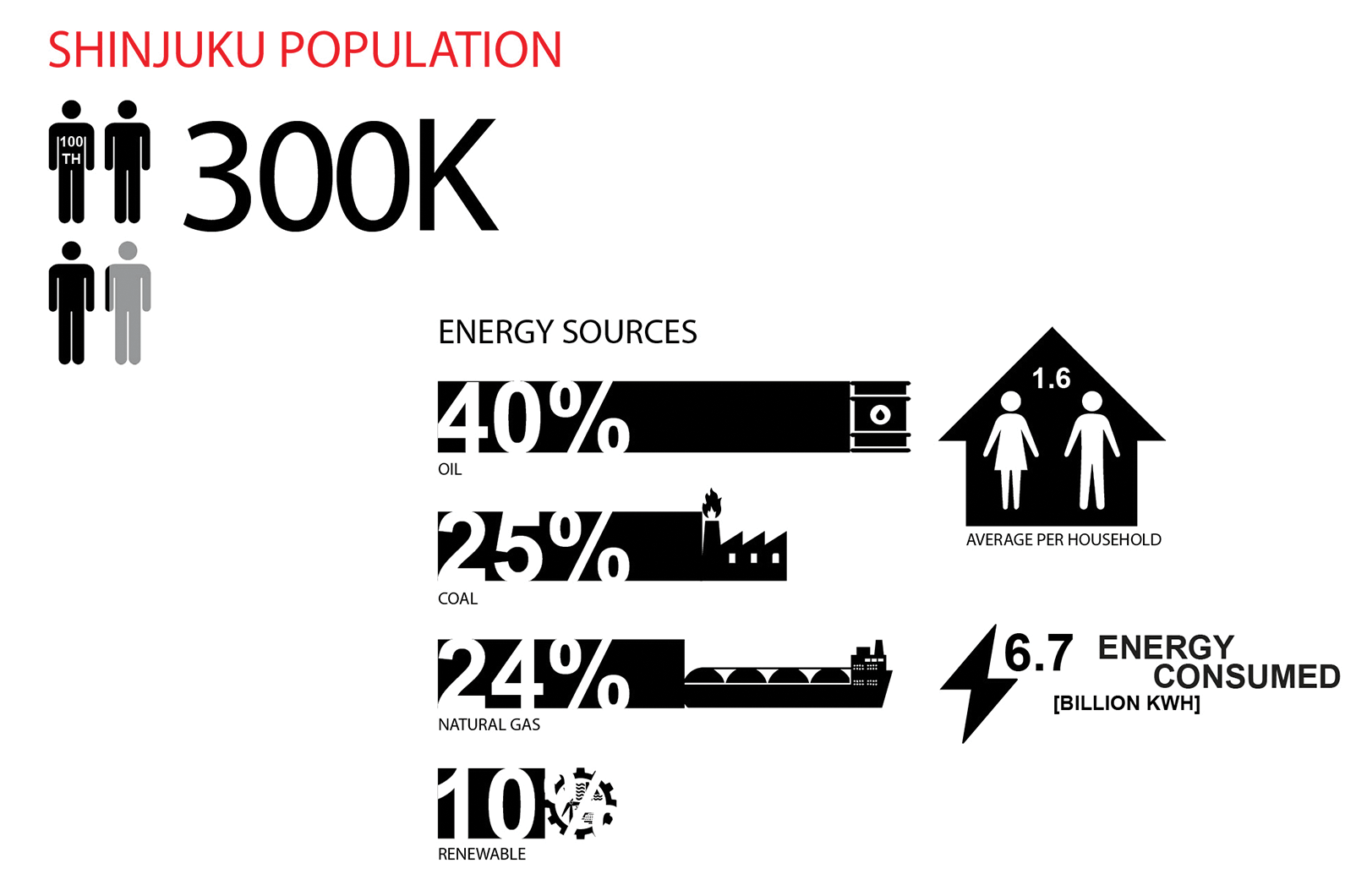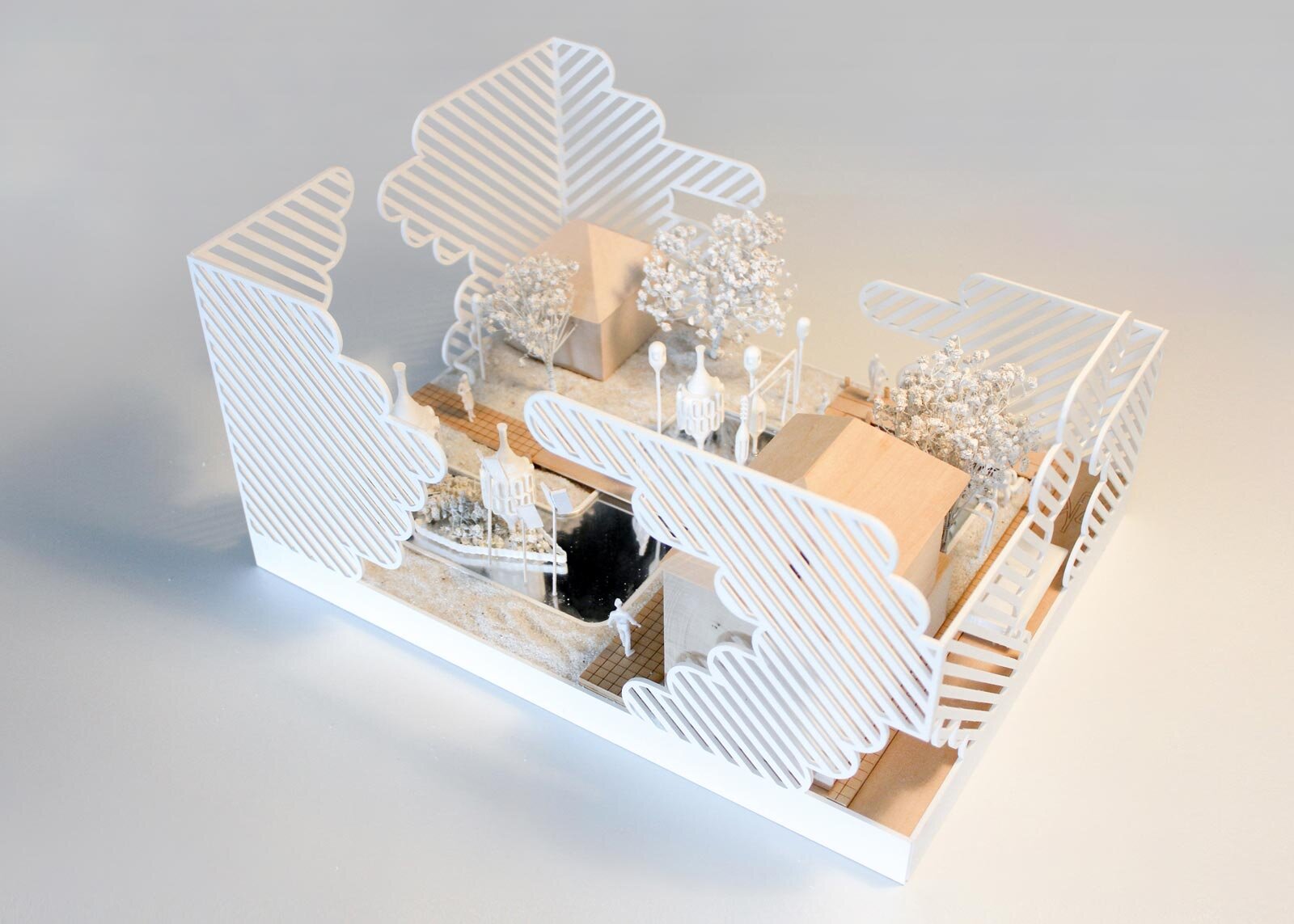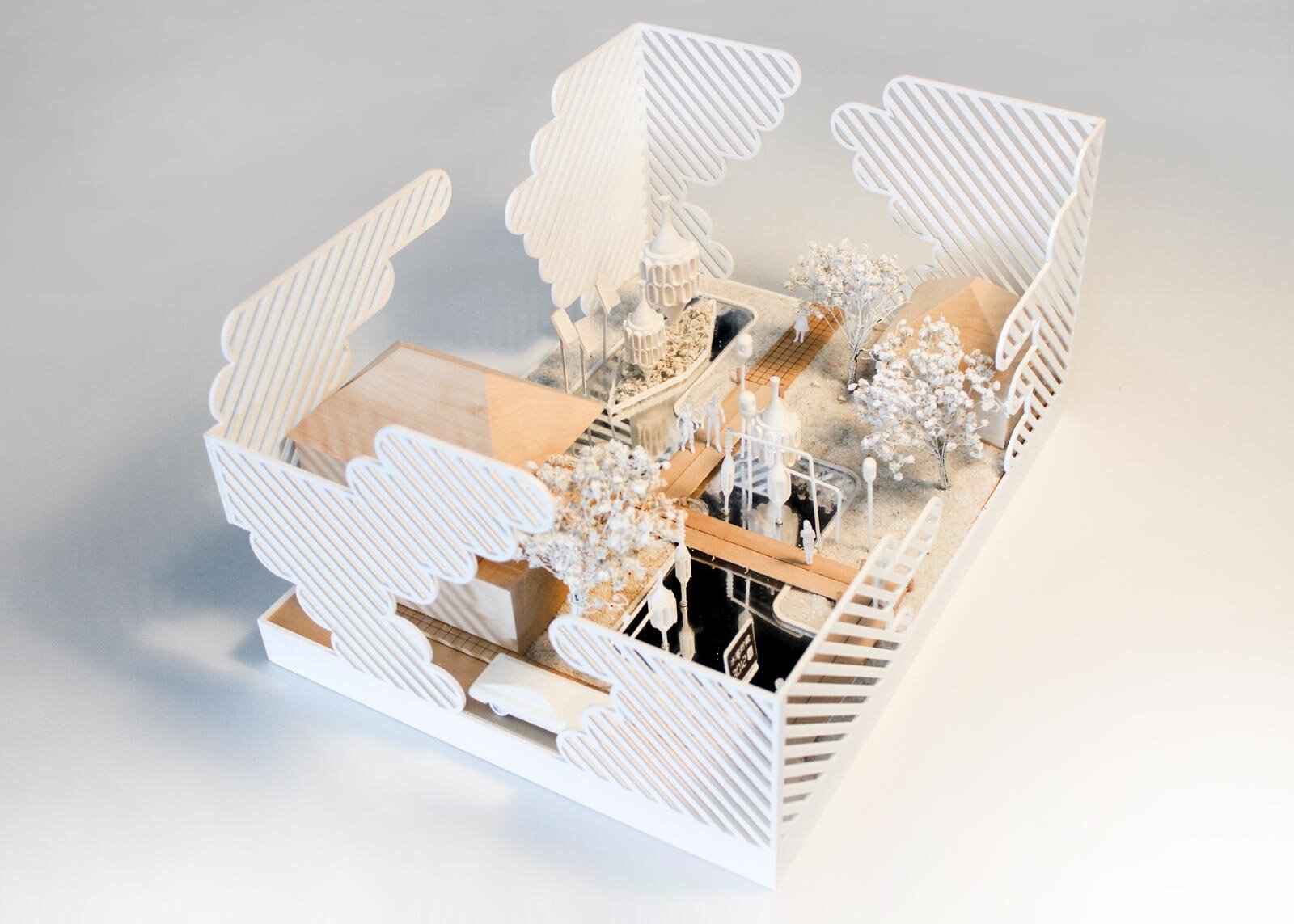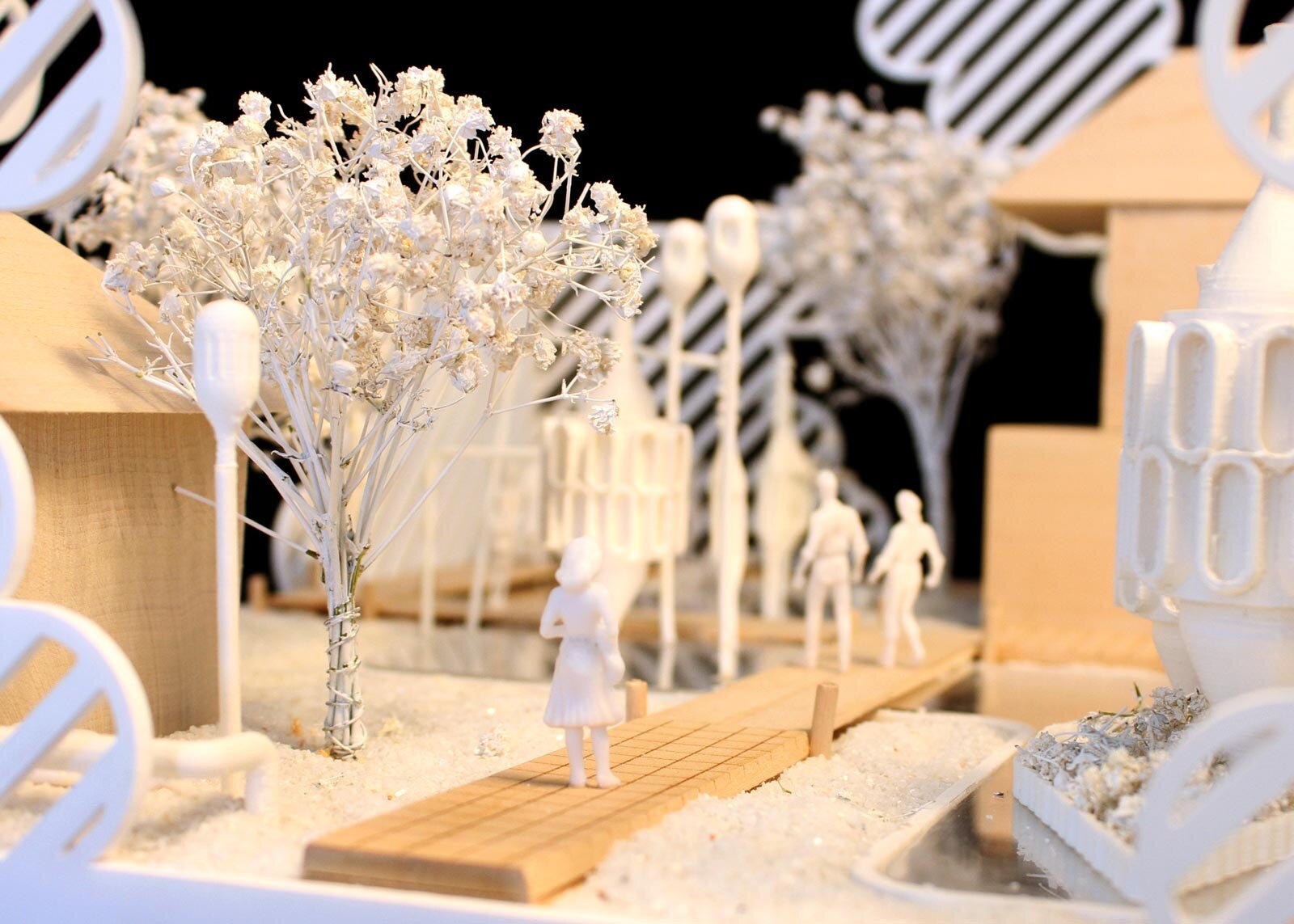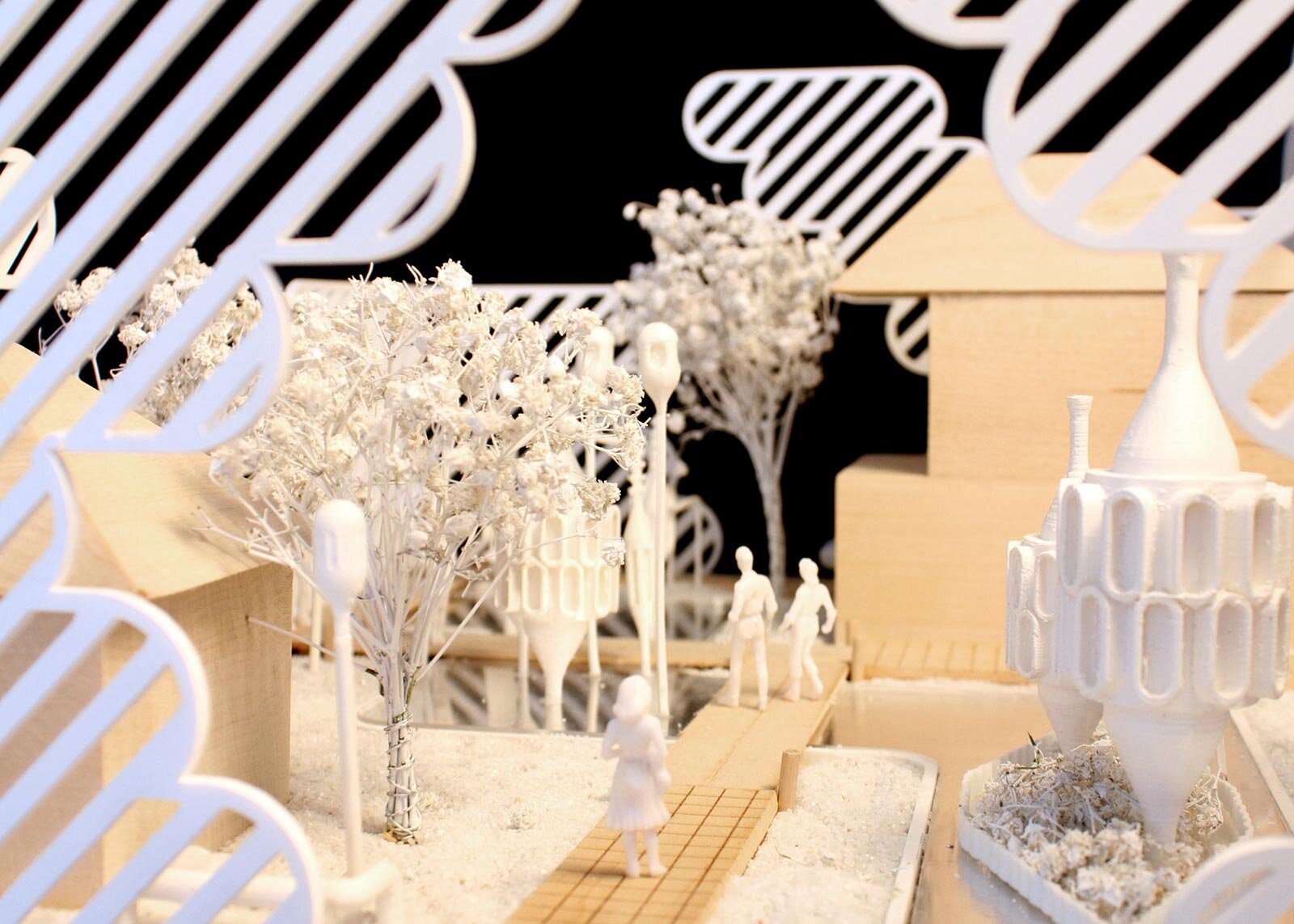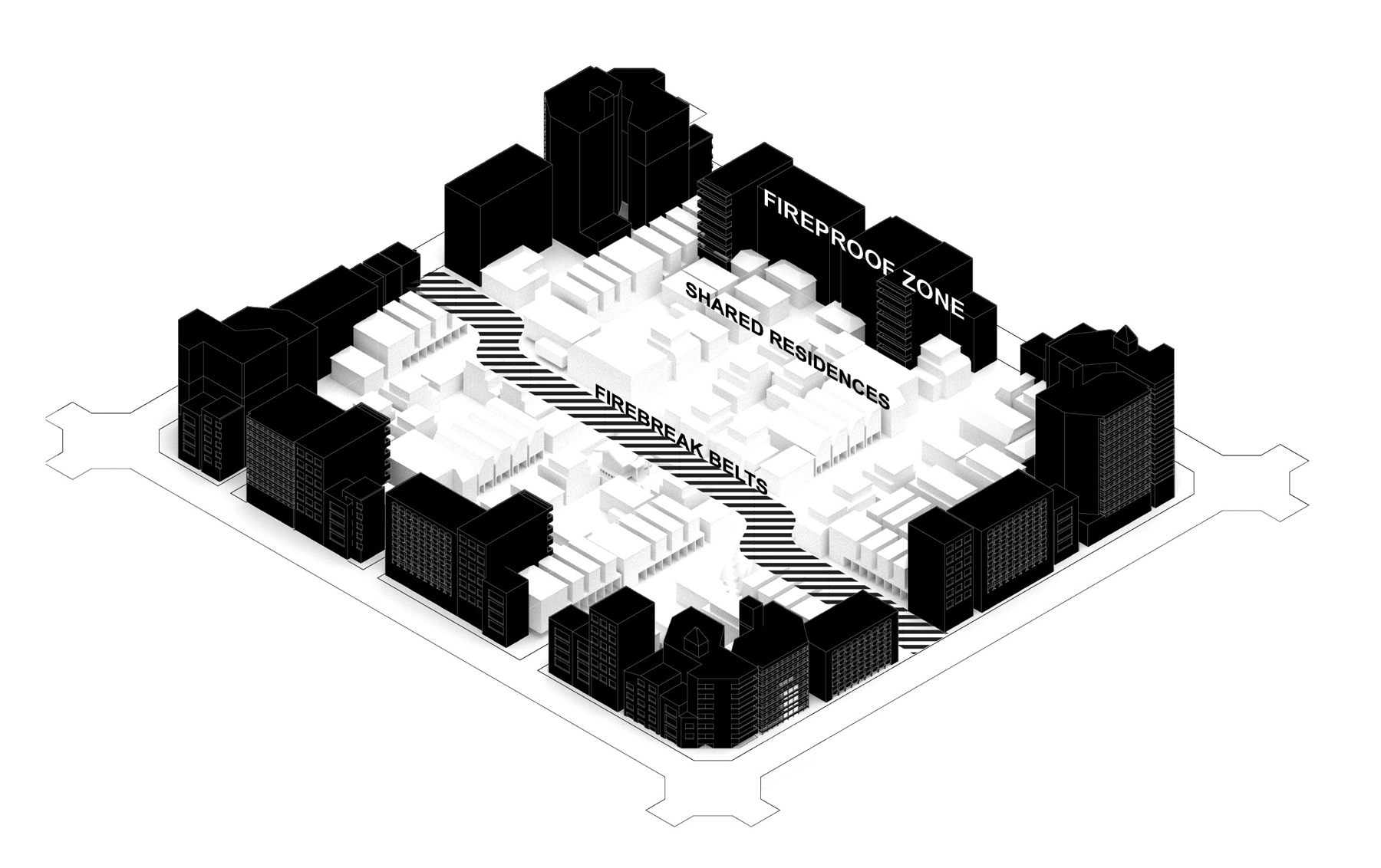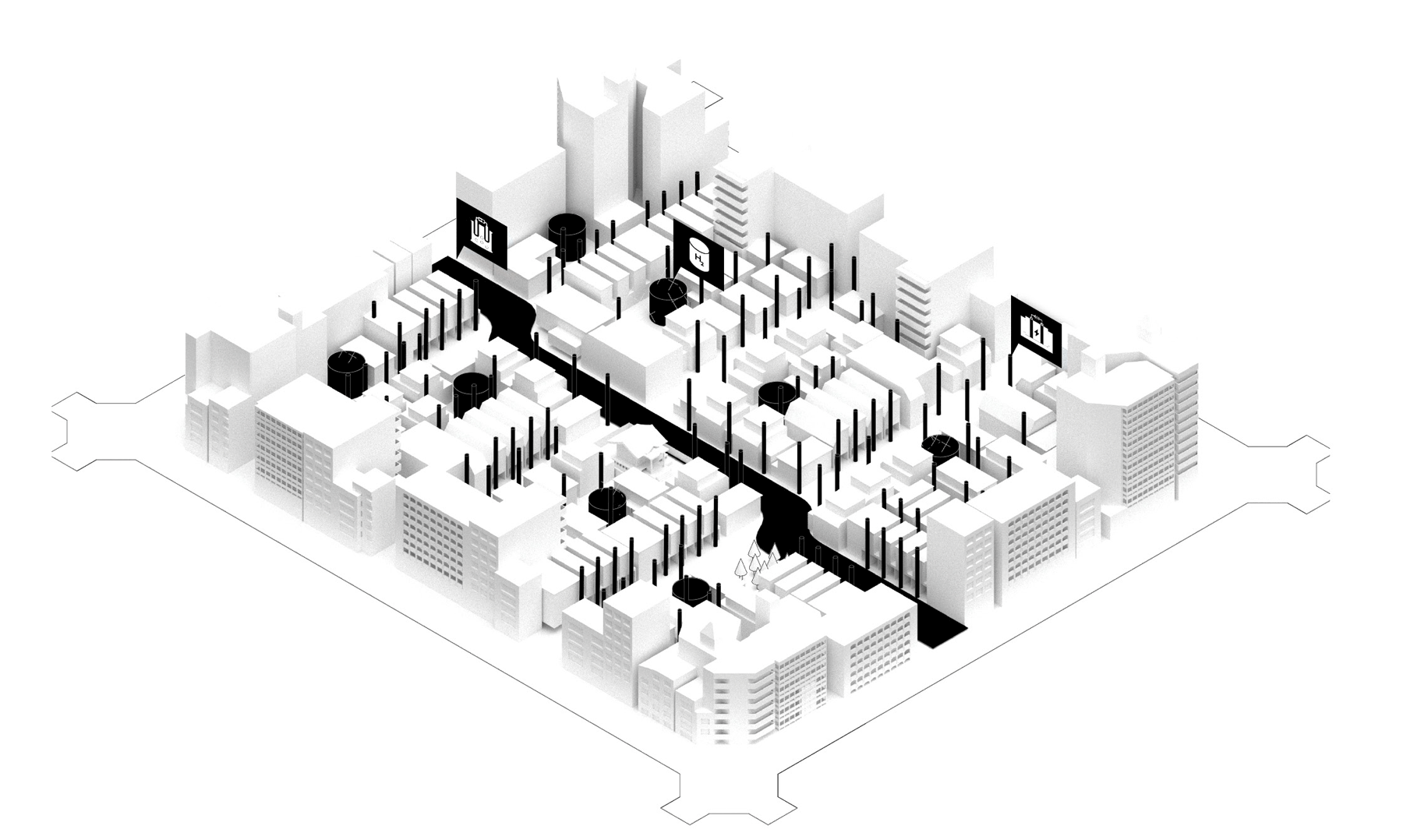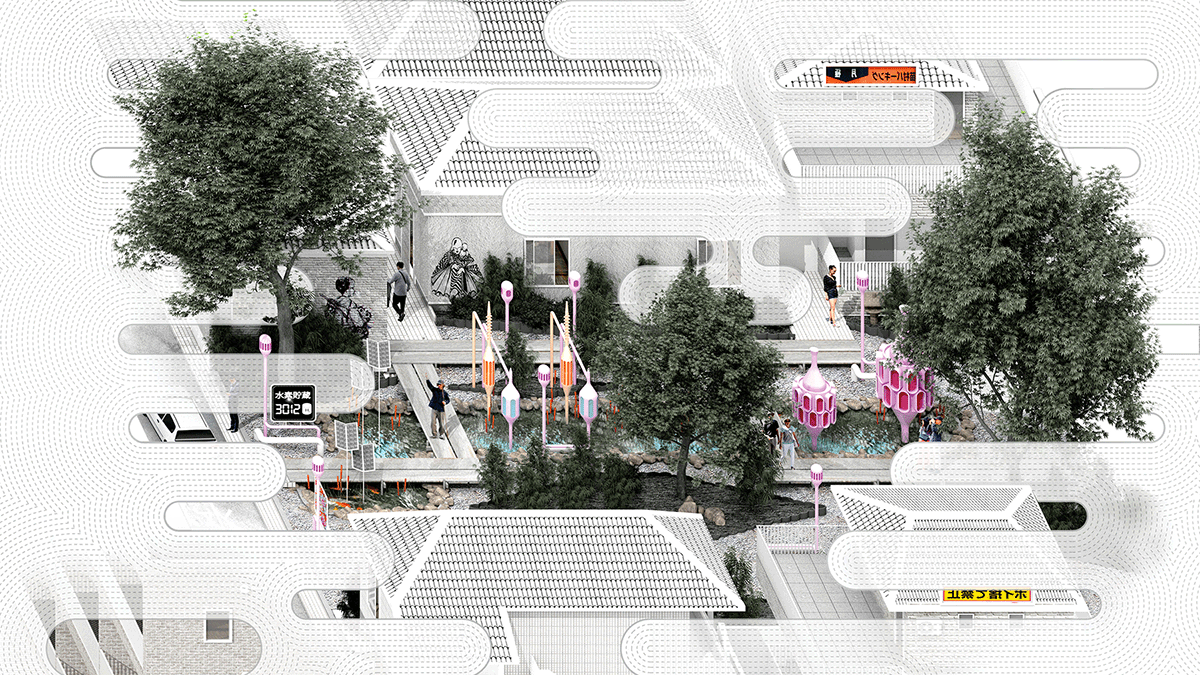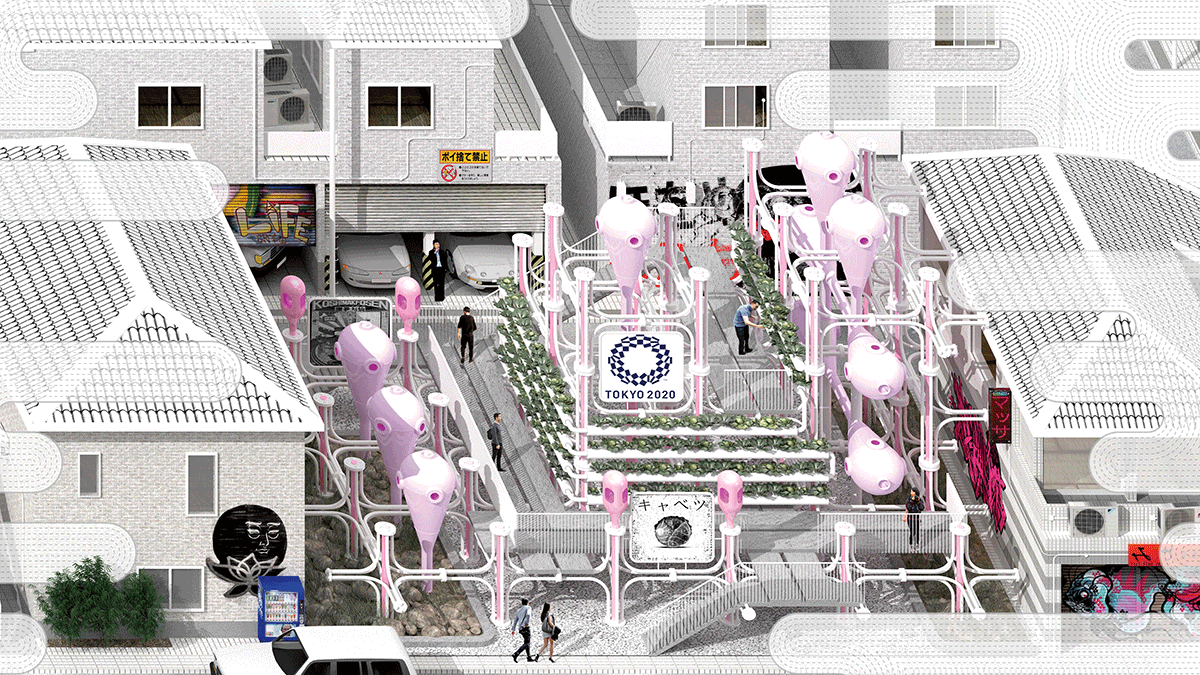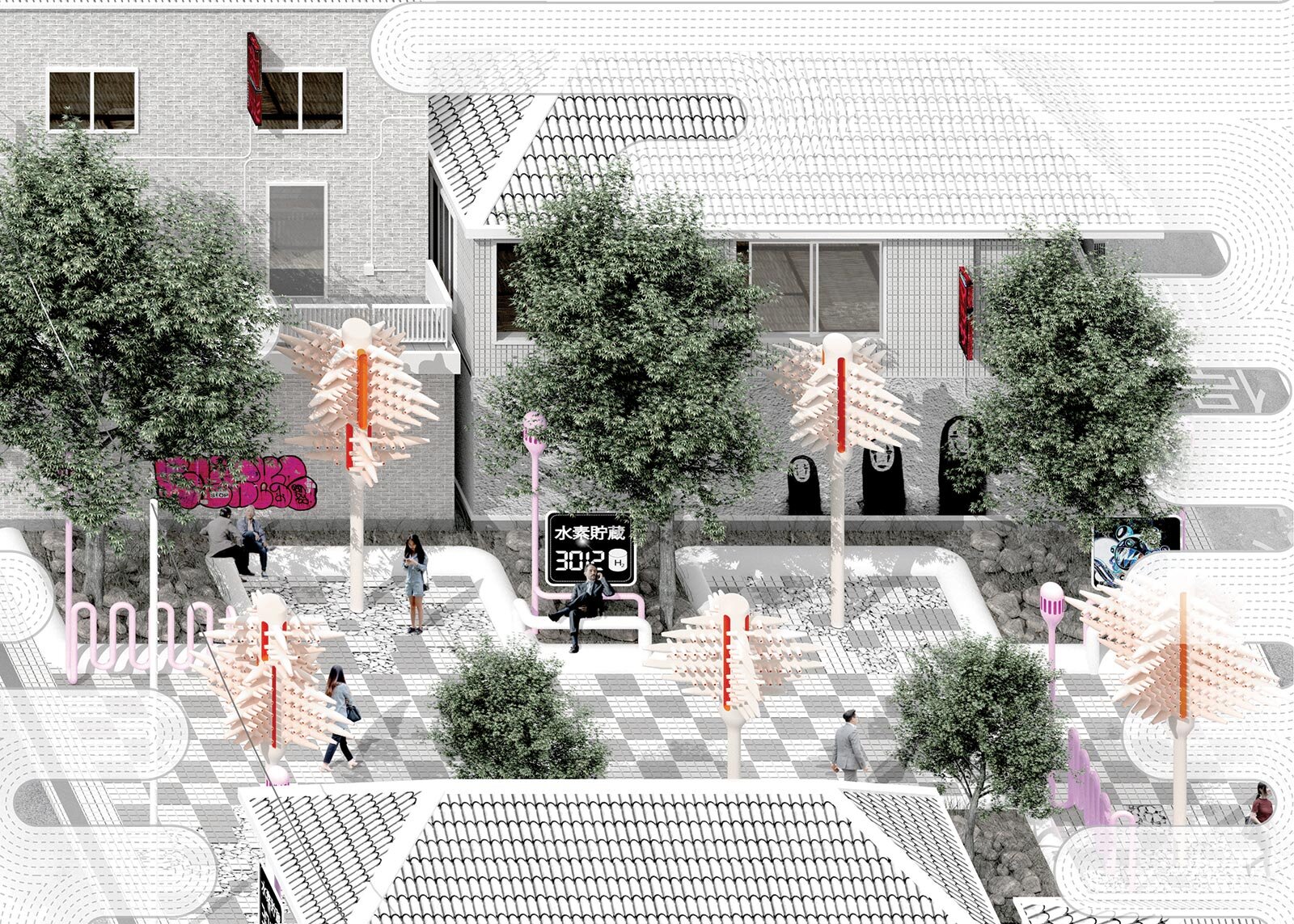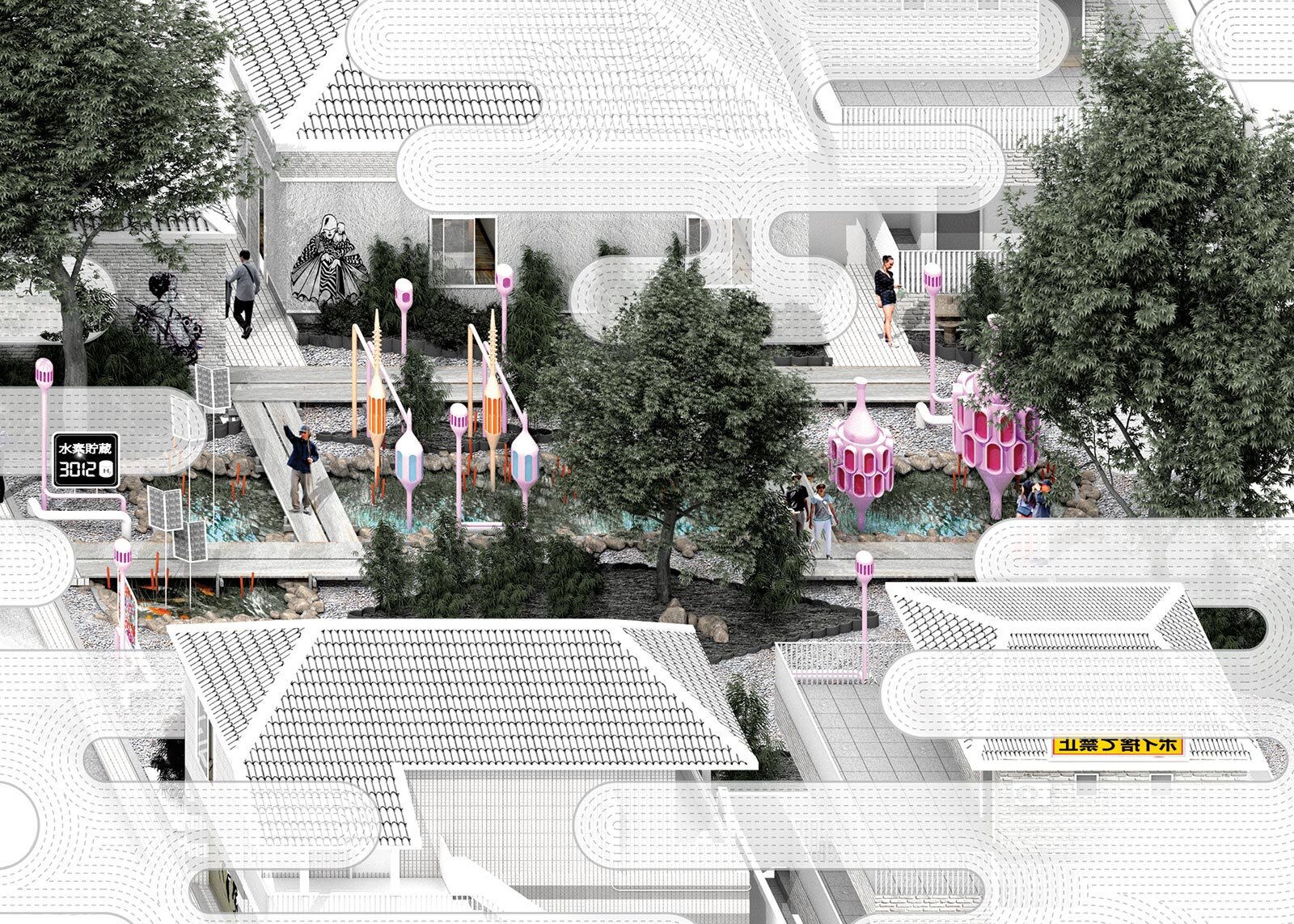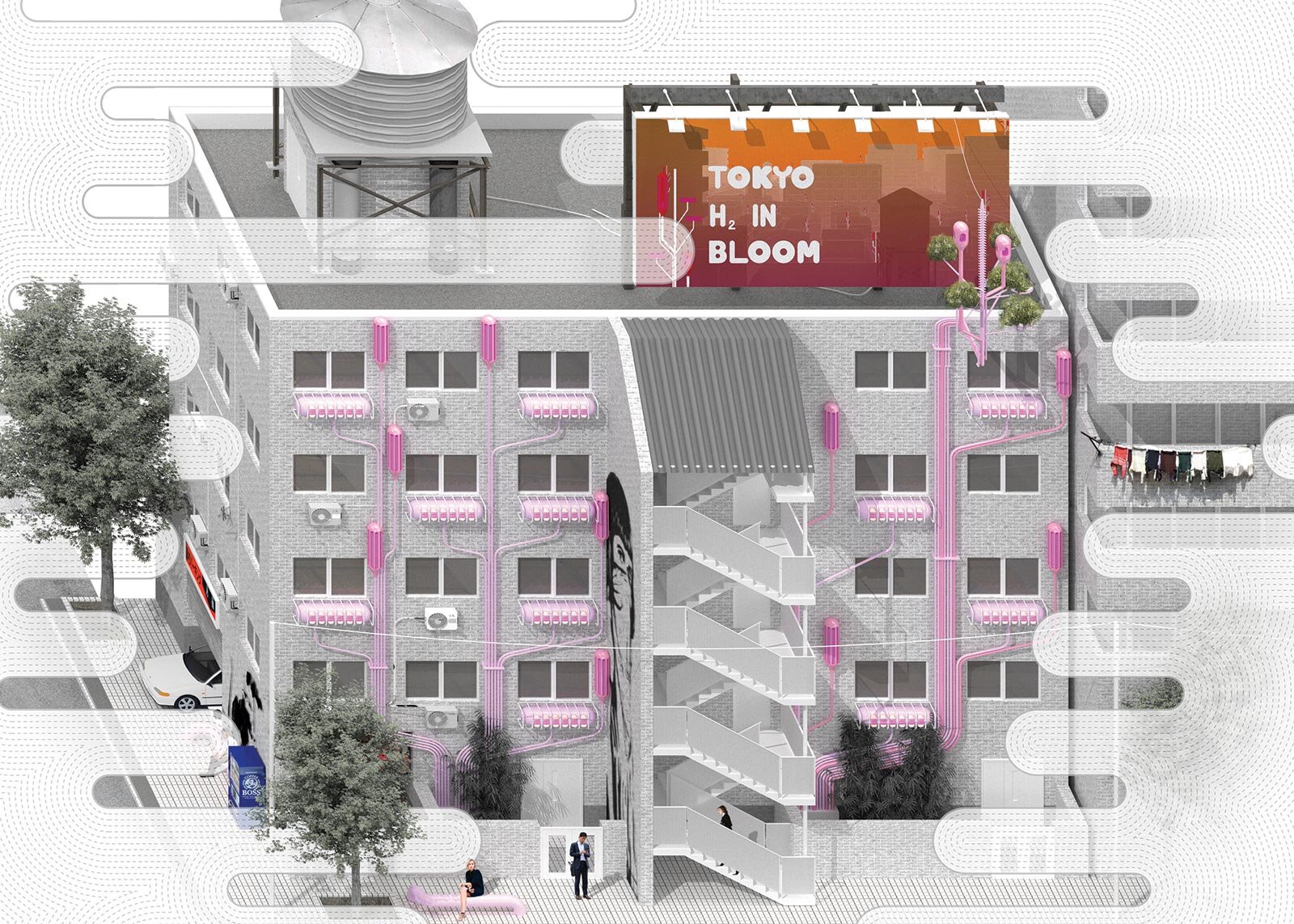As a historical precedence, Japanese Metabolists dealt with increasing population and limited resources, such as land and energy. Now, in the 21st Century, we are facing the decreasing population and same constraints, compounded by sustainability. Inheriting the Metabolist legacy, what we prefer is same in form, but differ in type. We propose a similar formal language and system, but deployed and re-appropriated for different energy, infrastructural, and urban vision from the precedence in terms of scale and function of the interventions.
/ Diagrams
Fuel-Cell Futurisms proposes a new development plan for Tokyo. Leveraging the architectural ambition of the 1960’s plan against the economic, and ecological realities of the 2020’s. The proposed new Tokyo plan, will be born out of a desire to reduce economic dependence on importation of liquid based petroleum, as an energy intensive practice. Simultaneously eliminating the reliance on regional based nuclear solutions who’s byproducts have alarmed the citizenship since the disaster of Fukushima. These 20th century energy solutions, created around the notion of a center city relationship will be revisited to establish an energy policy more suited to 21st century politics creating a community shared and risk distributed energy ecosystem.
This new model of localized infrastructural solutions implemented at the urban block, speaks towards the pronounced feeling of uncertainty; with regard to current climactic unpredictability as well as the decreasing possibility of large governmental intervention, projects such as massive water and energy infrastructure are challenging. The proposed new model of shared urban energy – water infrastructure will build on Japan’s architectural legacy of the Mega-project as well as its robust history of urban collective form though implementable at the private and individual scale of urbanism and architecture. Fuel Cell Futurism will vie for a new public realm mixed with infrastructure and collective use.
/ Model
Building upon Japan’s robust and complex relationship between building and nature in the man-made garden, creating a new hybrid condition of infrastructural sublime. Clean Hydrogen Fuel is a three part process, beginning with the catalyzed electrolysis of water, splitting the water into Oxygen and gaseous Hydrogen, which is stored on site. Following which, to power a Hydrogen fuel cell which through fusion with pure oxygen generates energy.
/ Drawings
This three tiered approach will in turn be distributed at three urban scales, the landscape park which will operate across the entirety of the megablock, the urban block folly within selected soft sites of each block, and the lot of the individual single-family house system. Each of these sites will have a shared aesthetic of form born stemming from the Metabolist legacy’s vegetation logic spoken by Kenzo Tange… “The structural element is thought of as a tree-- a permanent element with its dwelling units as the leaves - temporary elements which fall down are renewed according to the needs of the moment, but the structure remains.”
/ Project Team
Jonathan A. Scelsa, Jennifer Birkeland, Alessandra Carreno Novoa, + Hamza Hamdeh
/ Collaborators
Kaz Yoneda , Bureau 0-1
/ Project Info
/ Type - Exhibition, Balancing Act
/ Gallery - BSA Space: Boston, MA
/ Publication - Journal of Architectural Education
/ Project Date - 2019


